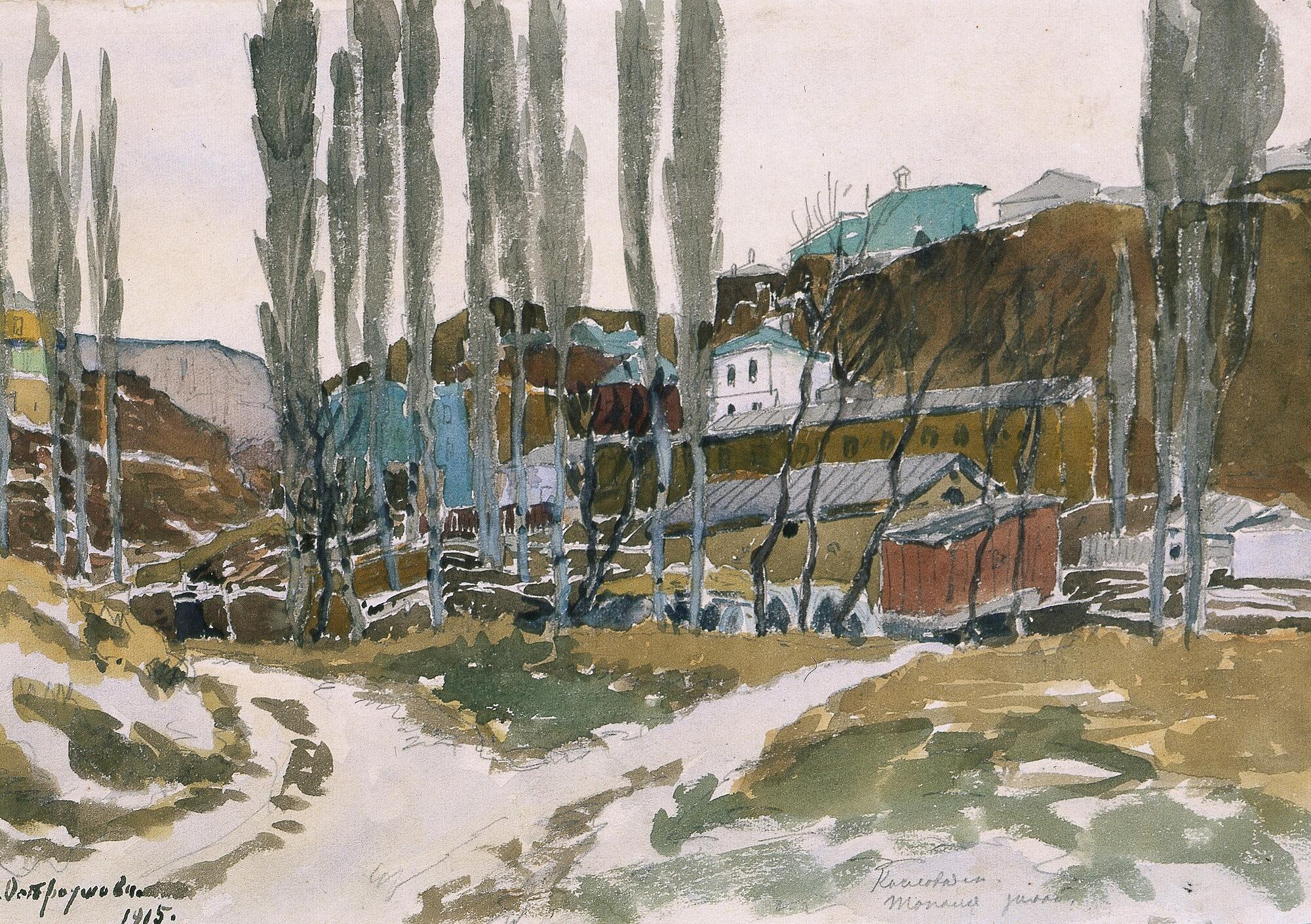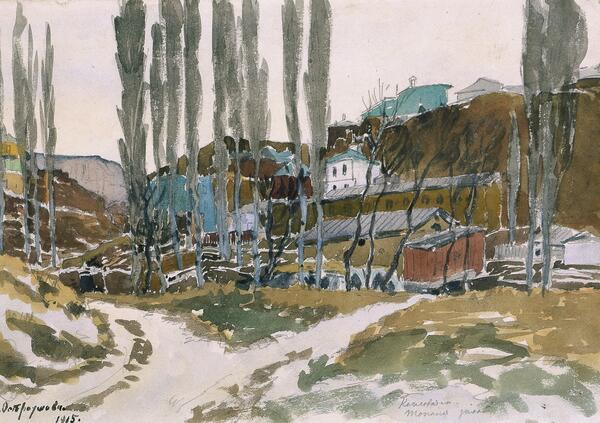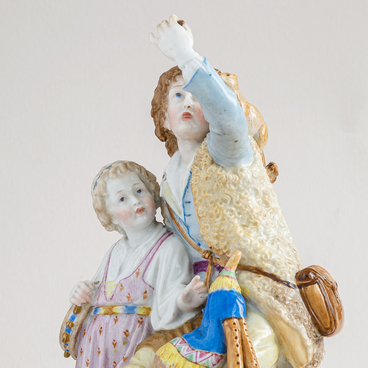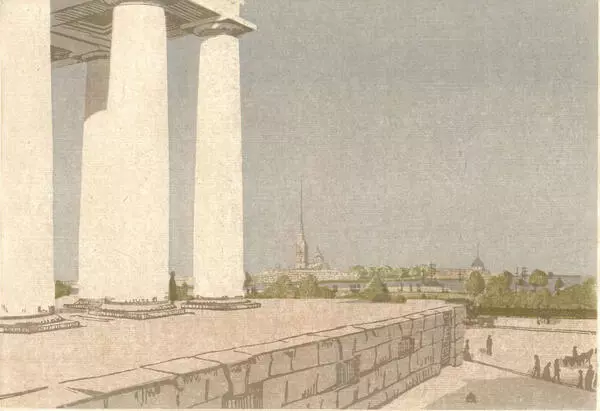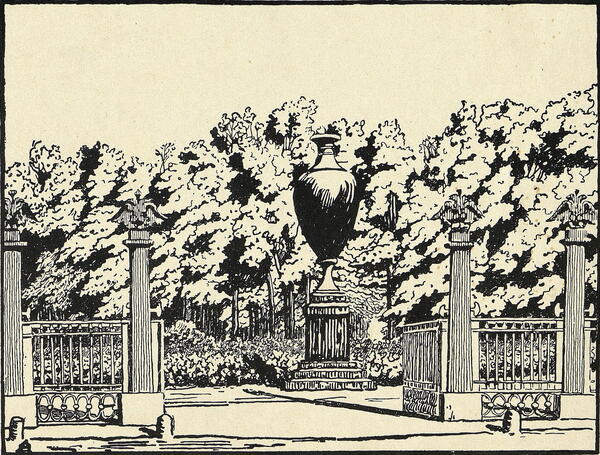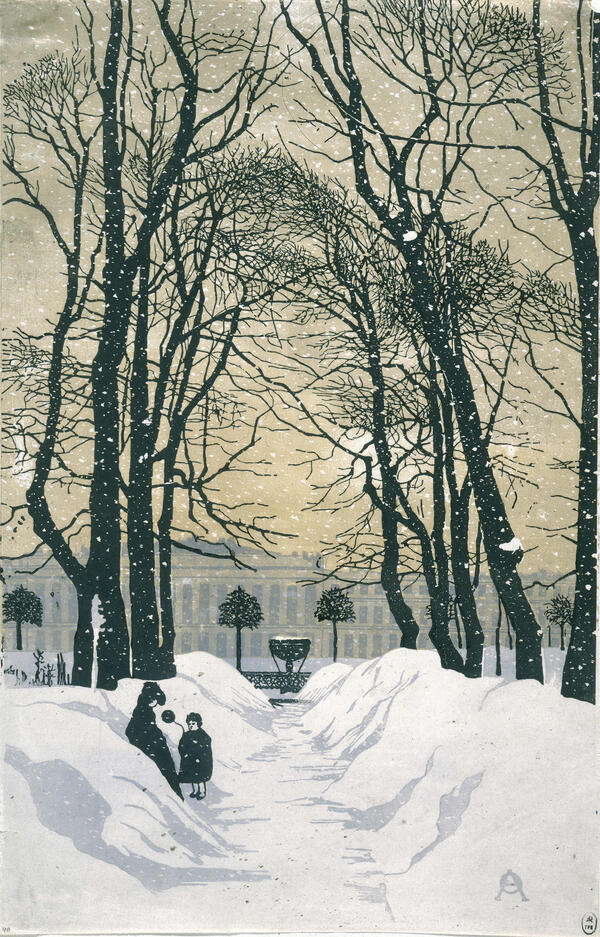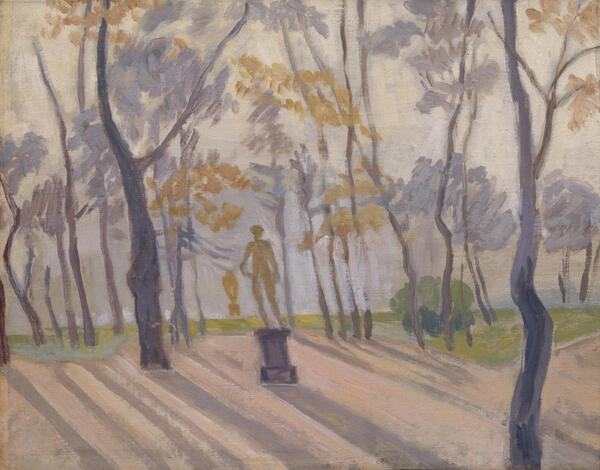Anna Ostroumova-Lebedeva was born into the family of a senator, a privy councilor, one of the highest civil officials of the Holy Synod of the Russian Orthodox Church, Pyotr Ostroumov, and his wife Maria Chekhovich.
Ostroumova-Lebedeva received her primary art education at the Central School of Technical Drawing of Baron Alexander Stieglitz. Her teacher was Vasily Mate — one of the most famous engravers of the late 19th century, academician, and full member of the Imperial Academy of Arts. At school, she mastered the woodcut technique — wood engraving — which became the main method in her work.
Ostroumova continued her education at the Higher Art School at the Imperial Academy of Arts, where women were already accepted. The teachers at that time were famous artists: Ilya Repin, Konstantin Savitsky, and Pavel Chistyakov. As her graduation work, Ostroumova-Lebedeva presented 14 engravings and completed her studies with the title of artist. In 1898 — 1899, the artist worked in Paris in the studio of James Whistler, an American master of pictorial portraits, etching, and lithography. At the same time, Ostroumova became close to the artists of the association ‘Mir iskusstva’ [‘World of Art’], participated in their exhibitions and the publication of the magazine under the same name.
In 1905, Ostroumova married the chemist Sergey Lebedev. It was a happy marriage: the husband supported the artist in everything. In 1918–1922 she taught at the Higher Institute of Photography and Photographic Technique, and then at the All-Russian Academy of Arts.
During World War II, Ostroumova-Lebedeva worked in besieged Leningrad. In the city, she created a number of poignant graphic works. In 1946 she was awarded the title of People’s Artist of the RSFSR, and in 1949 she became a full member of the USSR Academy of Arts. She died on May 5, 1957, just one day before her 86th birthday.
The main theme of her engravings was the architectural landscape, in particular, views of Saint Petersburg and its suburbs. The first works in this series appeared in the 1900s, featuring Pavlovsk. The cycle was completed by the woodcut “View of the Fortress at Night”, on which Ostroumova, already seriously ill, worked in the mid-1940s.
Ostroumova-Lebedeva traveled extensively in Russia and abroad. Her “Autobiographical Notes” hold the memories of multiple trips to the Caucasus with her husband. During one of those trips, she painted the watercolor “Kislovodsk” displayed in the exhibition. Lebedeva wrote about this trip:
Ostroumova-Lebedeva received her primary art education at the Central School of Technical Drawing of Baron Alexander Stieglitz. Her teacher was Vasily Mate — one of the most famous engravers of the late 19th century, academician, and full member of the Imperial Academy of Arts. At school, she mastered the woodcut technique — wood engraving — which became the main method in her work.
Ostroumova continued her education at the Higher Art School at the Imperial Academy of Arts, where women were already accepted. The teachers at that time were famous artists: Ilya Repin, Konstantin Savitsky, and Pavel Chistyakov. As her graduation work, Ostroumova-Lebedeva presented 14 engravings and completed her studies with the title of artist. In 1898 — 1899, the artist worked in Paris in the studio of James Whistler, an American master of pictorial portraits, etching, and lithography. At the same time, Ostroumova became close to the artists of the association ‘Mir iskusstva’ [‘World of Art’], participated in their exhibitions and the publication of the magazine under the same name.
In 1905, Ostroumova married the chemist Sergey Lebedev. It was a happy marriage: the husband supported the artist in everything. In 1918–1922 she taught at the Higher Institute of Photography and Photographic Technique, and then at the All-Russian Academy of Arts.
During World War II, Ostroumova-Lebedeva worked in besieged Leningrad. In the city, she created a number of poignant graphic works. In 1946 she was awarded the title of People’s Artist of the RSFSR, and in 1949 she became a full member of the USSR Academy of Arts. She died on May 5, 1957, just one day before her 86th birthday.
The main theme of her engravings was the architectural landscape, in particular, views of Saint Petersburg and its suburbs. The first works in this series appeared in the 1900s, featuring Pavlovsk. The cycle was completed by the woodcut “View of the Fortress at Night”, on which Ostroumova, already seriously ill, worked in the mid-1940s.
Ostroumova-Lebedeva traveled extensively in Russia and abroad. Her “Autobiographical Notes” hold the memories of multiple trips to the Caucasus with her husband. During one of those trips, she painted the watercolor “Kislovodsk” displayed in the exhibition. Lebedeva wrote about this trip:
